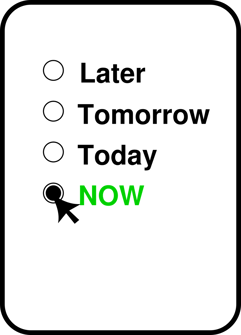Consumers now have more power than ever. The power has moved from the seller to the buyer thanks to the endless access to information the internet provides before having to make a purchasing decision. Therefore, the way salespeople interact with their prospect must change, as well.
Inbound sales is a personalized methodology that focuses on the buyer's goals and pain points, establishes trust between both parties, and adjusts the conversation to where the buyer is in their buying journey. This personalized approach eliminates the "ickiness" of traditional sales because the sale is not your initial focus - helping is!
Dive Deeper Into Inbound Sales |
There are many differences between legacy salespeople and salespeople that adopt the inbound sales methodology. Some of the noticeable differences include:
The evolution of the salesperson lies within their goals. Rather than focusing on sales, take a genuine interest in the conversation and build trust with the prospect to determine if they are best suited for your solution. The transition may be easier than you think!
Just like any great organization, there are methods to our madness. The Inbound Sales Methodology follows the prospect on their journey from stranger to a customer and explains how the sales team engages at each level.
.png?width=810&name=Inbound%20Methodology%20(2).png)
Who is your ideal customer? Do your research! Make the best use of your time, by identifying the best prospects for your team. Prioritize active buyers, those who have visited or engaged with your website or have shown interest in your brand and solutions, over passive buyers.
What if our prospects are not engaging with our website or brand? Understand the behaviors that illustrate they may be ready for a solution—otherwise referred to as trigger events. Common trigger events include:
- Hiring (New Executives, Replacements for Current Contacts)
- Company Expansion or Relocation
- Significant Client Acquisition
- New Products or Services
- Major Competitive Move
- Dissatisfaction with Current Partnership
- Mergers or Acquisitions
- Good Quarter or Bad Quarter
- Press Coverage or Awards
- Major Industry Development or Expansion into New Industry
Those that you have identified in this stage on the inbound sales methodology now become your leads.
Ditch your standard pitch. Establishing a sense of familiarity and trust can lead to valuable conversations. Connect within the buyer's context, whether that be industry, role, relation, interest, or so on, to build initial rapport. Personalize the way you connect with your prospects by defining:
Persona - who the individual is and the perspectives they have.
Sequence - the channels and frequency you reach out to each lead
Content - information that is valuable at their stage of the buyer's journey
If you are able to connect and move forward in engaging with your prospect, the lead moves to a qualified lead.

Once you have the opportunity to connect with your leads, your conversation will explore the goals and challenges of the business to assess if they are a good fit for your offering. Move through an exploratory conversation by:
1. Uncovering Challenges
2. Setting Goals to Overcome their Challenges
3. Developing Plans within the Prospect's Timeline
4. Discussing Budget
Not every lead is meant to be sold, but there is always an opportunity to help. If the exploratory conversation proves to be beneficial for both parties, then continue into the Advise Stage.
At this point, your conversation has proven to be well worth the time invested in getting to know your lead. They understand their challenges and agree on plans to reach their goals. It is now time to advise leads on why your solution is uniquely positioned to meet their needs.
What differentiates traditional sales & inbound sales |
Give a bit more attention to detail on your next sales call! By utilizing the Inbound Sales Methodology, you can appeal to the most qualified leads by meeting them in the right places, at the right time within their buyer's journey.
To learn more about inbound sales, check out No Time for Cold Calls: The Inbound Sales Promise
We have all experienced it, like a scene straight out of a horror film. The room grows quiet as the phone rings, sending a shudder down your spine. Your calendar does not show any sign of scheduled calls, so who could this be. Your emails continue...
Regardless of your industry, it is crucial to understand your audience. Who are they? What do they like? What do they worry about? What answers are they looking for? The better you know your audience, the better you will be able to speak to your...
Not Every Customer, Should Be Your Customer Should you sell your product to every customer that’s willing to purchase it? In your ideal world the answer is an obvious yes. More sales equates to more profits and at the end of the day the goal of a...
ABOUT
Marketing Services
HubSpot Services
Resources
CONTACT
267.982.4044
info@moderndrivenmedia.com
590 Lancaster Ave, Ste 110,
Malvern, PA 19355
Join Our e-newsletter